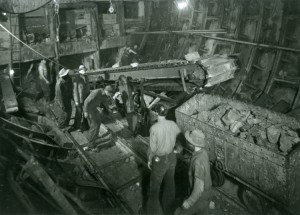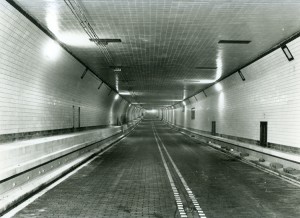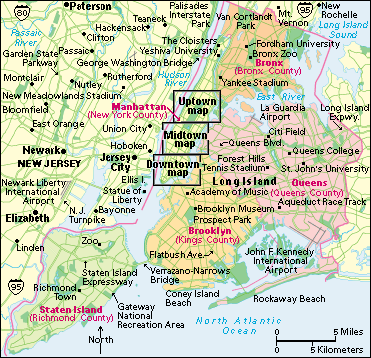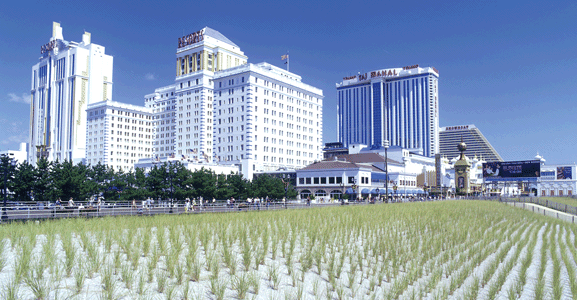Opening the Lincoln Tunnel
Friday, December 22nd, 2017December 22, 2017
On Dec. 22, 1937, 80 years ago today, the center tube of the Lincoln Tunnel opened to motor traffic, connecting midtown New York City with Weehawken, New Jersey. Funded by the the Public Works Administration (PWA), the tunnel was built beneath the Hudson River by the Port Authority of New York and New Jersey, putting thousands of people to work during the Great Depression. A terrific engineering feat, the tunnel eased commutes in the burgeoning metropolis. Named after Abraham Lincoln, the tunnel followed the completion of the Holland Tunnel, also under the Hudson, in 1927.

Workers load rubble onto tram cars during the excavation of the Lincoln Tunnel in April 1935. Credit: The Port Authority of New York
Construction on the Lincoln Tunnel began in March 1934, and crews worked from both sides of the Hudson River. The work of the sandhogs—as workers who dig tunnels are sometimes known—was dangerous and claustrophobic. To reach the construction sites beneath the river, crews had to pass through air locks that eased them in and out of the high pressure areas. Dynamite exploded, giant drills roared, and tram cars rattled as workers braced the tunnel’s excavation with concrete and hundreds of giant iron rings. The New Jersey and New York workers met beneath the river for the first time in August 1935.

Temporary lighting illuminates the Lincoln Tunnel in October 1937, two months before it opened to motor traffic. Credit: The Port Authority of New York
Today, the Lincoln Tunnel has three tubes, each with two traffic lanes. The 8,216-foot (2,504-meter) center tube carries vehicles in either or both directions, depending on traffic needs. Westbound vehicles travel in the 7,482-foot (2,281-meter) north tube, opened in 1945. The 8,006-foot (2,440-meter) south tube is for eastbound traffic. The completion of the south tube of the Lincoln Tunnel in 1957 brought the total cost to about $190 million. More than 20 million vehicles use the tunnel every year. Today’s cash toll for using the bridge—$15 for cars—is slightly higher than the original fare of 50¢.
As late as 1900, Manhattan was not connected with New Jersey by either bridge or tunnel. A few bridges crossed the narrow Harlem River on the north, connecting Manhattan with the Bronx. Brooklyn Bridge, across the East River, connected the lower end of Manhattan with Long Island. But the thousands of New Jersey people who worked in Manhattan had to cross the Hudson River every day by ferryboat. This was the same method that the Dutch settlers had used nearly 300 years before. Today, seven tunnels under the Hudson River connect Manhattan with New Jersey. The tunnels are used for rail, automobile, truck, and bus traffic. Construction of other routes beneath the river is ongoing.




